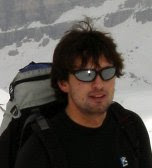"Mūsų dienos kaip šventė, kaip žydėjimas vyšnios Tad skubėkim gyventi, nes prabėgs nebegrįš" . Kai muši bongą iki ryto, o ryte vis dar svajoji išeiti į kalnus - labai padeda apelsinai ir aspirinas. Išgeri puodelį šviežiai spaustų sulčių, įkali aspirino ir kaip ant sparnų. Užskiturinom gražią viršūnę, o aš padariau du virtuoziškus salto važiuodamas žemyn. Tai kuo gi čia dėtas amfetaminas? Pasirodo, Austrijoje yra alpinizmo muziejus, kuriame eksponuojama old-school alpinizmo įranga. Kas keisčiausia ten padėtas ir amfetamino buteliukas. Na ir priedo žodis prasideda "a" raide.
Kadangi esame Google eroje, smeigiau "amphetamine mountaineering" ir ką? Yra straipsnis (vokiečių k.) "Amphetamine doping in leisure-time mountain climbing at a medium altitude in the Alps", bet iš abstract nesupratau ką gi jie atrado. O kitoje vietoje radau:
Taking medication/drugs for acclimation, especially in the Alps, is not necessary and can be harmful to your health. The best, safest, and most sensible way to acclimatize is by gaining altitude slowly. Taking drugs such as Diamox is not helping for acclimation. It merely suppresses the very symptoms that tell your body that something serious may be occurring- something that can only get worse in higher altitudes. I have had to have clients flown out with severe altitude sickness that had been masked by taking such drugs. This is not the Himalayas where a climber is at such a high altitude that he/she cannot move down to safety quickly or easily. Only in such extreme situations should a climber take drugs, such as Dexamethason Amphetamine three-D- cocktail to save his/her life until descent is possible.
Dabar šiek tiek minčių iš mano draugo daktaro Torsten. Jis pasisako už paracetamoli, nes kalnuose aspirinas nėra labai gerai jei susižeidi.
Paracetamol - ist the drug. (the pharmaceutic group is called "non-steroid-anti-rheumatic-drug"
It helps:
- to relief pain
- to lower fever
- no effect on inflammations.
The big advantage is that there are the least side-effects you can think of. It is metabolized by the liver and by overdose-use it can harm you liver. That is (besides a possible allergie) the most important side-effect. You can give it to new-born babys, to old sick people, the pregnant women.... no problem.
The common dosage is: 3x 500mg per day.
Aspirin® (ASS) (also a non-steroidal-anti-rhematic)
Effects:
- pain relief
- lowers fever
- anti-inflammatory-effect (this is an advantage to Paracetamol - but only if it is needed)
More side effects than Paracetamol:
It harms your stomach with the risk of a gastric ulcer.
It prevents the blood-cells from clodding together (good if you are having a heart attac or a thrombosis - bad if you are bleeding through an inner or outside wound - cause you lose blood!)
It is not allowed to give Aspirine to kids younger than ±15years for danger of Reye's Syndrome.
Trumpai tariant ne viskas, kas prasideda iš "a" raidės yra gerai, net jei visą naktį mušėt bongą ar ruošiatės užkariauti dar vieną viršūnę...
Visgi lieka APELSINAS. Prieš vartodami vaistus pasitarkite su gydytoju arba vaistininku.
Monday, 16 February 2009
Subscribe to:
Post Comments (Atom)




3 comments:
Interesting (Wikipedia):
"Paracetamol is extremely toxic to cats, and should not be given to them under any circumstances. Cats lack the necessary glucuronyl transferase enzymes to safely break paracetamol down, and minute portions of a tablet may prove fatal."
(Paracetamol is contained in medicines against fever and flue - like my favourite: Wick Medinait: 2 grams per 100 ml)
I am also wandering if Paracetamol is making blood more thin and could help to prevent trombosis in higher altitudes.
He he :) Šmaikščiai, bet netuščiai ;)
Post a Comment